
- 160 pages
- English
- ePUB (mobile friendly)
- Available on iOS & Android
eBook - ePub
Astronomy For Beginners
About this book
Astronomy For Beginners is a friendly and accessible guide to our universe, our galaxy, our solar system and the planet we call home. Each year as we cruise through space on this tiny blue-green wonder, a number of amazing and remarkable events occur. For example, like clockwork, we’ll run head-on into asteroid and cometary debris that spreads shooting stars across our skies. On occasion, we’ll get to watch the disk of the Moon passing the Sun, casting its shadow on the face of the Earth, and sometimes we’ll get to watch our own shadow as it glides across the face of the Moon. The Sun’s path will constantly change across the daytime sky, as will the stars and constellations at night. During this time, we’ll also get to watch the other majestic planets in our solar system wander the skies, as they too circle the Sun in this elaborate celestial dance.
Astronomy For Beginners will explain this elaborate celestial dance – the patterns of the heavens, the equinoxes and the solstices, the major meteor showers, and the solar and lunar eclipses. In addition, Astronomy For Beginners will also take you on a guided tour of the solar system and beyond. We’ll discover how the way we measure time itself is intimately related to celestial phenomena, and we’ll furthermore explore our historical and continuing mission to understand our place in this marvelous universe in which we find ourselves.
Oh yeah, one more thing: Astronomy For Beginners will not only help you become an expert in space and time – but it also promises to be a pretty fun ride!
Astronomy For Beginners will explain this elaborate celestial dance – the patterns of the heavens, the equinoxes and the solstices, the major meteor showers, and the solar and lunar eclipses. In addition, Astronomy For Beginners will also take you on a guided tour of the solar system and beyond. We’ll discover how the way we measure time itself is intimately related to celestial phenomena, and we’ll furthermore explore our historical and continuing mission to understand our place in this marvelous universe in which we find ourselves.
Oh yeah, one more thing: Astronomy For Beginners will not only help you become an expert in space and time – but it also promises to be a pretty fun ride!
Frequently asked questions
Yes, you can cancel anytime from the Subscription tab in your account settings on the Perlego website. Your subscription will stay active until the end of your current billing period. Learn how to cancel your subscription.
No, books cannot be downloaded as external files, such as PDFs, for use outside of Perlego. However, you can download books within the Perlego app for offline reading on mobile or tablet. Learn more here.
Perlego offers two plans: Essential and Complete
- Essential is ideal for learners and professionals who enjoy exploring a wide range of subjects. Access the Essential Library with 800,000+ trusted titles and best-sellers across business, personal growth, and the humanities. Includes unlimited reading time and Standard Read Aloud voice.
- Complete: Perfect for advanced learners and researchers needing full, unrestricted access. Unlock 1.4M+ books across hundreds of subjects, including academic and specialized titles. The Complete Plan also includes advanced features like Premium Read Aloud and Research Assistant.
We are an online textbook subscription service, where you can get access to an entire online library for less than the price of a single book per month. With over 1 million books across 1000+ topics, we’ve got you covered! Learn more here.
Look out for the read-aloud symbol on your next book to see if you can listen to it. The read-aloud tool reads text aloud for you, highlighting the text as it is being read. You can pause it, speed it up and slow it down. Learn more here.
Yes! You can use the Perlego app on both iOS or Android devices to read anytime, anywhere — even offline. Perfect for commutes or when you’re on the go.
Please note we cannot support devices running on iOS 13 and Android 7 or earlier. Learn more about using the app.
Please note we cannot support devices running on iOS 13 and Android 7 or earlier. Learn more about using the app.
Yes, you can access Astronomy For Beginners by Jeff Becan,Susan Becan in PDF and/or ePUB format, as well as other popular books in Physical Sciences & Astronomy & Astrophysics. We have over one million books available in our catalogue for you to explore.
Information

And that which sings and contemplates in you is still dwelling within the bounds of that first moment which scattered the stars into space.
- Kahlil Gibran, The Prophet
[Alfred A Knopf, Random House, Inc. New York, 1951.]
[Alfred A Knopf, Random House, Inc. New York, 1951.]
In the beginning ... all things were one

We refer to the original state of our universe as the initial singularity, wherein everything we know to exist - matter, energy, time, and space - existed as one single reality, unimaginably small and infinitely dense. This all-encompassing reality was smaller than an atom, and nothing else existed outside of it.
If this notion seems impossible to comprehend - that’s because it is! No one really understands and, in fact, when we trace the history of the universe back to this original state of affairs, the laws of science, as we know them
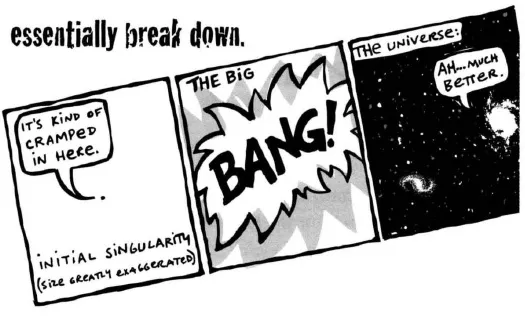
But somehow - roughly 12 to 15 billion years ago - this initial singularity burst forth in what we call the Big Bang, giving birth to a creative, expanding, and dynamic universe!
Gravity is one of the fundamental forces by which matter is attracted to matter. On one hand, if the rate of expansion of the early universe had been much faster than it was, it would have been too fast for gravity to have been able to draw matter together. Neither galaxies, nor stars, nor planets, nor people could have ever existed, as all of the material unleashed by the Big Bang would have just scattered apart endlessly into infinity.
On the other hand, as Stephen Hawking states in A Brief History of Time ...
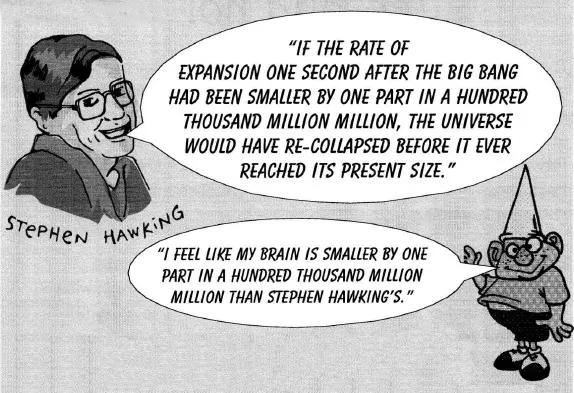
Fortunately for us, the rate of expansion after the Big Bang was apparently perfectly balanced with the amount of matter in the universe. If it hadn’t been perfectly balanced, we wouldn’t have the enormous and beautiful complexity that we see when we look up into the night sky - or, for that matter, when we look all around our world.



The Big Bang is a theory - but it’s a theory supported by overwhelming evidence. The expansion of the universe, however, is not a theory, but something that can be observed. First and foremost, if the universe is expanding as we go forward in time then, if we trace the history of the universe backwards in time, we can visualize it all stemming from a common beginning.
Early in the 20th century, astronomers and physicists first exploring the idea of the Big Bang reasoned that, with so much matter and energy packed together, the early universe had to have been so hot, and so dense, that nuclear reactions would have occurred everywhere at once. Nuclear reactions release radiation in the form of radioactive particles so, if all of this is true, then we should still be able to detect the residual heat radiation of the Big Bang throughout the universe. By now, billions of years later, they estimated this radiation should have cooled immensely, to be just a few degrees above absolute zero.

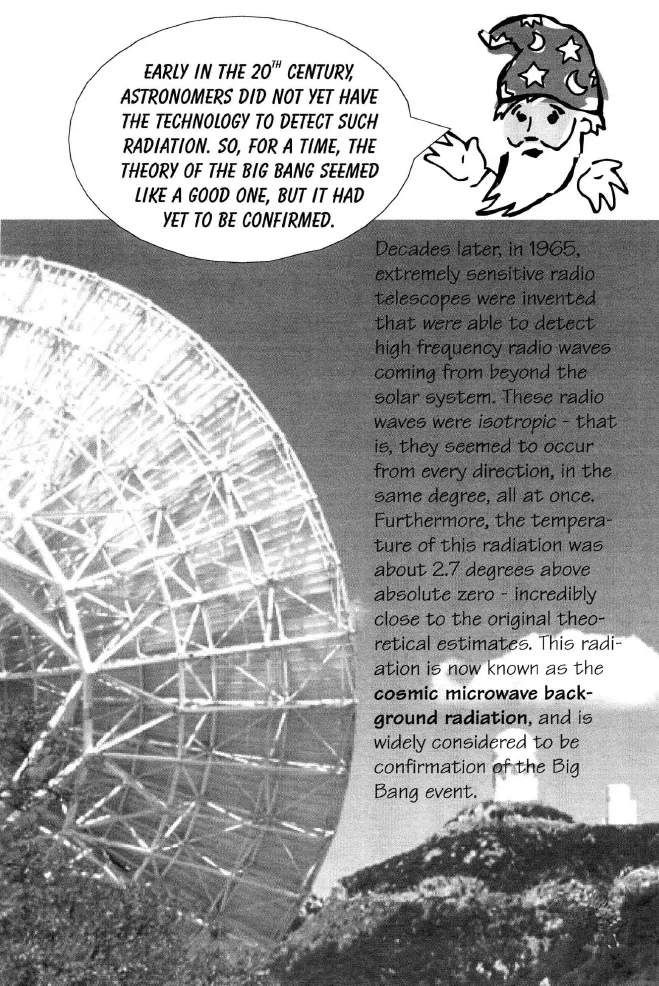

In the moments immediately after the Big Bang, the universe would have still been so tightly packed together that everything would have essentially existed as a single fireball of energy. But as the universe rapidly expanded, it would also cool, which would allow for different physical processes to emerge.

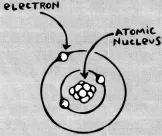
Although this occurred within just the first three minutes of time, it took hundreds of thousands of years before the universe had expanded and cooled enough for the subatomic particles of electrons to surround these atomic nuclei. And when the first electrons bound themselves into orbit around the first atomic nuclei, they were finally able to form the first atoms - the fundamental particles of matter.

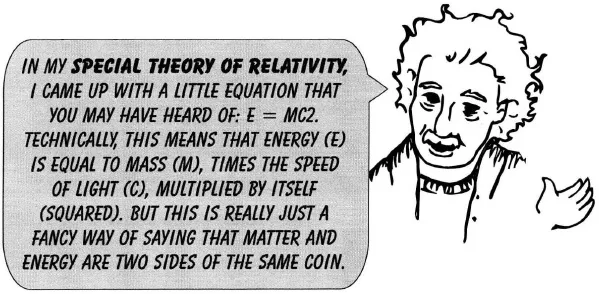
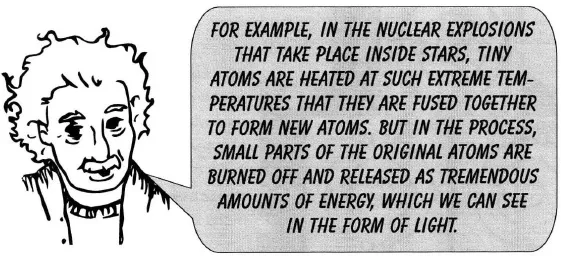
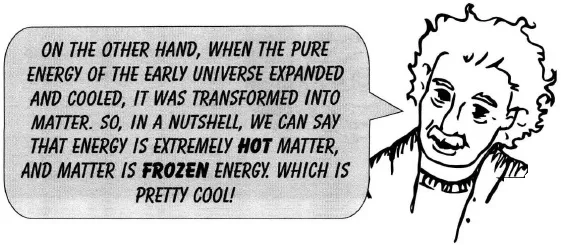
Different combinations of protons, neutrons and electrons form different kinds of atoms, or elements. Roughly one billion years after the Big Bang, the simplest and most abundant elements - hydrogen and helium - began to condense, forming gaseous molecular clouds, or nebulae (Latin for ‘clouds’). Eventually, through the force of gravity, the hydrogen and helium atoms within these molecular clouds collapsed upon themselves, forming the first st...
Table of contents
- Coverpage
- Titlepage
- Copyright
- Contents
- Introduction
- Chapter 1: The Big Bang
- Chapter 2: The Solar System
- Chapter 3: Earth, Sun, Moon
- Chapter 4: The Night Sky
- Measuring Time
- Our Place in the Cosmos
- Acknowledgments
- Recommended for Further Reading
- Index